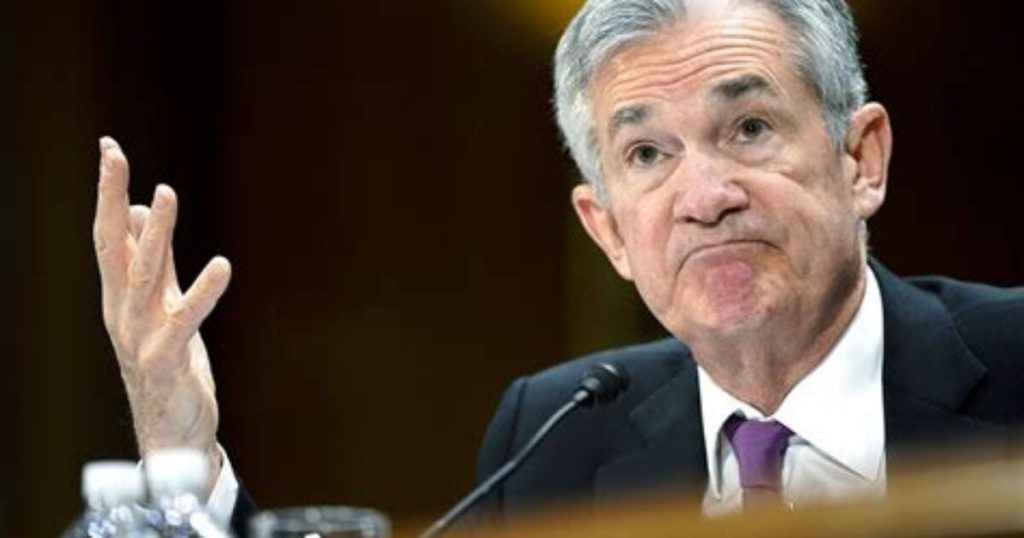Federal Reserve Chairman Jerome Powell said Tuesday that his confidence has weakened that inflation is under control.
His comments made at a bankers’ conference in Amsterdam came the same day that the Labor Department reported that wholesale prices jumped 0.5 percent in April, the largest increase since April 2023.
Wholesale prices are tracked by the Producer Price Index, which measures the selling prices producers of goods and services receive.
CNBC: Wholesale inflation rose MUCH more than expected in April.
That’s Bidenomics! pic.twitter.com/NbVUyS3zVP
— RNC Research (@RNCResearch) May 14, 2024
Powell first told the bankers that the U.S. economy is performing well, seeing strong growth of just over 3 percent last year, as unemployment remains below 4 percent and inflation has come down from its peaks in 2022 and early 2023.
“Core inflation got as high as 5.6 percent and is now at 2.8 percent, so it’s down by half. That progress though really happened over the course of last year, particularly the second half of last year,” the fed chief said.
Core inflation measures the change in prices of goods and services, but does not include food and energy costs, which have gone up considerably during President Joe Biden’s time in office.
Food prices are up over 21 percent since January 2021. Meanwhile the price of gasoline averaged $2.40 per gallon that month, and is currently $3.61, or a 50.42 percent increase.
“The first quarter in the United States was notable for its lack of further progress on inflation. We had higher readings in the first quarter, and higher than we expected,” Powell conceded.
“We did not expect this to be a smooth road. But these [inflation readings] were higher than I think anybody expected,” he continued. “What that has told us is that we’ll need to be patient and let restrictive policy do its work.”
CNBC reported that the Federal Reserve has increased interest rates 11 times in recent years in its efforts to combat inflation.
The purpose of raising interest rates is to make borrowing more expensive, which is designed to slow consumer spending and business investment, lowering demand and thereby bringing prices down, according to Chase Bank.
“I expect that inflation will move back down on a monthly level, on a monthly basis to levels that were more like the lower readings we were having last year,” Powell predicted.
But he added the caveat, “I would say my confidence [in that forecast] is not as high as it was, having seen these readings in the first three months of the year.”
“We’re just going to have to see where the inflation data fall out,” Powell said.
What the fed chairman did not get into is how Biden’s and the Democrats’ big government, high spending policies are a primary driver of inflation.
Former Trump and Reagan administration economist Larry Kudlow explained in May 2022 as price spikes were hitting their highest, “Look, you had prominent Democrat economists and Republican economists a year ago predict rising inflation because of huge social spending, aggregate demand increasing, deficit financing, too much borrowing and too much money printing.”
“And then you had the war against fossil fuels at exactly the wrong time,” he added, referring to Biden’s policy of greatly restricting oil production on federal lands and offshore.
In a February 2021 opinion piece for The Washington Post, former Clinton Treasury Secretary Larry Summers wrote that passing the $1.9 trillion American Rescue Plan as the economy was already well on its way to recovery would “set off inflationary pressures of a kind we have not seen in a generation, with consequences for the value of the dollar and financial stability.”
After it passed the following month, Summers called it “the least responsible macroeconomic policy we’ve had in the last 40 years.”
Further, former Obama administration Treasury Department official Steven Rattner in a November 2021 article for The New York Times identified the American Rescue Plan as the “original sin” leading to the current high inflation rate.
He pointed to Summers’ warning, as well as “many others.”
“We worried that shoveling an unprecedented amount of spending into an economy already on the road to recovery would mean too much money chasing too few goods,” Rattner wrote.
The Democrats have since passed the misnamed Inflation Reduction Act, with costs on green initiatives alone expected to exceed $1 trillion, and the $1 trillion dollar infrastructure bill, pouring more Federal Reserve printed money into the economy.
Kudlow said the answer for the nation’s current fix is to implement the policy President Ronald Reagan did in the 1980s — known as supply-side economics.
In other words don’t just try to decrease demand through Fed interest rate hikes and less spending, work on increasing the supply of goods and services through pro-growth tax and regulatory polices.
“The tax hikes and the environmental restrictions [under Biden] are suppressing the supply side of the economy — not enough goods. And the spending increases the demand side of the economy — too much cash,” Kudlow said.
“If you are going to spend more than you can produce, well, prices have to go up. And the obvious solution is to spend less and produce more.”
The proof is in the pudding. Inflation dropped from 13.5 percent in 1980 before Reagan took office to 4.1 percent in 1988.
Powell of course does not have the power to make these policy changes, but the American people do by re-electing former President Donald Trump and a Republican-controlled Congress, who implemented Reagan-style economic policies in Trump’s first term and promise to do so again in his second.
This article appeared originally on The Western Journal.
The post Federal Reserve Chair Admits His Confidence Is Rattled as Wholesale Inflation Unexpectedly Surges appeared first on The Gateway Pundit.






